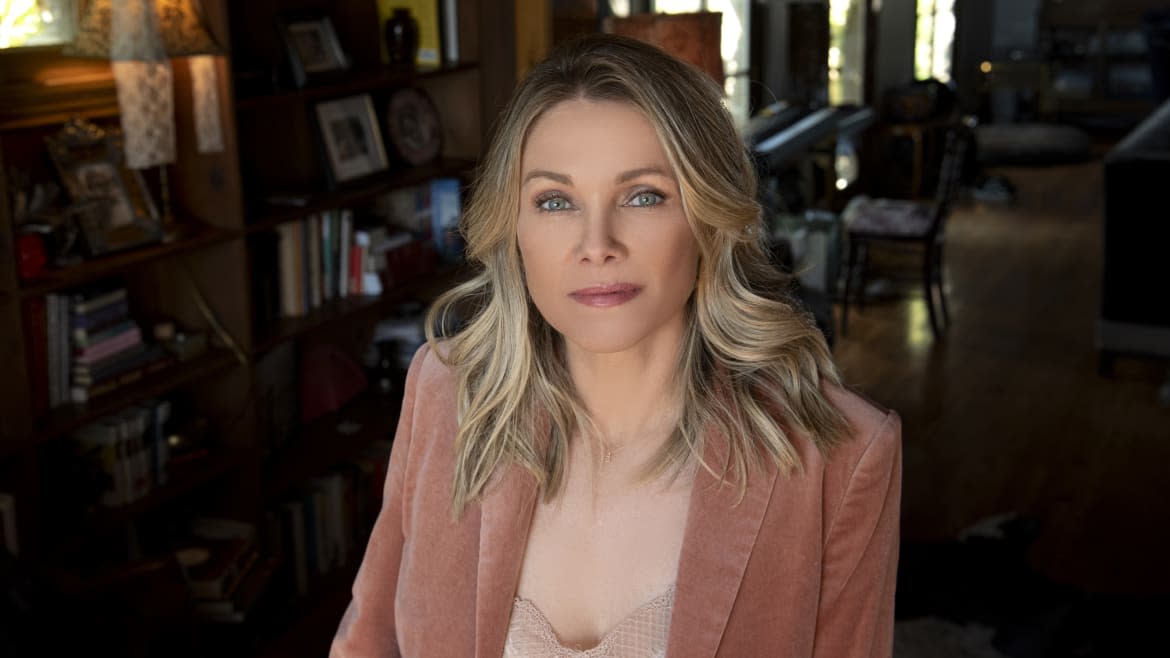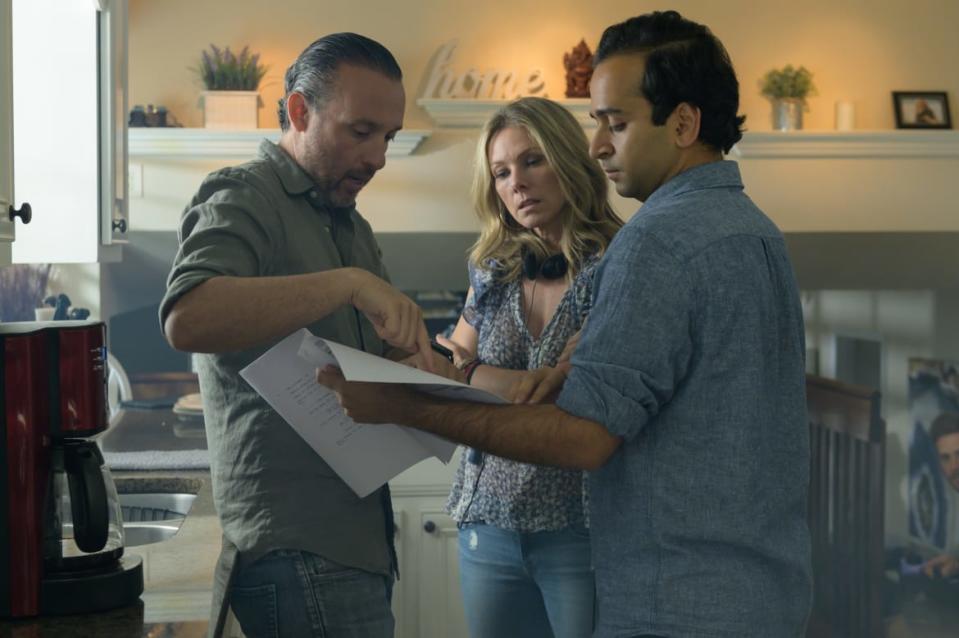How My Long Journey to Overcome Sexual Abuse Landed Me in NXIVM

I wrote and produced Transference, a psychological drama/horror film about my journey of healing and recovery from sexual abuse, after 13 years of deep psychological work, analysis, trauma therapy, psychics, gurus, healers and self-improvement courses, including the NXIVM 16-day program. I say “recovery” because the journey required me to dig deep within my psyche to retrieve and integrate the girl I had to abandon when I lost my innocence.
My journey to overcome childhood sexual trauma began when my youngest child was two, the same age I was when my mother abandoned me and the abuse started. I was abused several times by an older cousin at two and subsequently by a male babysitter at the age of four. The horror of childhood sexual abuse haunts its victims for years until we face down the “demons” of our past.
I was an actress living in my dream home in the Hollywood Hills with my director-husband and two beautiful daughters. While on the outside I had the perfect life, on the inside I was crawling out of my skin. I didn’t want to abandon my children like my mother did, so I went to India to attend spiritual process the Oneness University. Part of the 10-day program included the teaching “any emotion fully expressed turns to joy.” This made sense to me on an energetic level. I was carrying a lot of terrifying emotions pent up from a time in my life that was largely pre-language. At the time, I didn’t have the emotional intelligence to understand what was happening to me at such a young age much less express it to the adults in my life who were supposed to take care of me.
During a meditation, sitting in the lotus position on my straw mat, I saw how the trauma in those formative years shaped my identity and misbeliefs about myself and my place in the world. I saw how those constructs directed my choices and attracted circumstances where the pain from the original abuse would repeat. I flashed on memories throughout my life—my father’s colleague who tried to reach inside the leg of my shorts when I was 7, the school janitor who exposed himself to me when I was 10, the modeling agent who intimidated me into taking nude pictures when I was 16, the real estate agent I caught holding up a pair of my dirty panties in the garage of the house we were selling when I was 17, the Hollywood producer I was seated next to at a dinner party in my thirties, who whispered inappropriate things to me unbeknownst to my husband sitting by my side. Why didn’t I say anything? Why didn’t I tell them all to fuck off? Because at two years old, in front of my sleeping grandparents, my abuser whispered, “shhhhhh!” while he hurt me. There, in India, I had the awareness and opportunity to let it all go. I spent days on a yoga mat screaming with rage, mourning my lost innocence, crying out the sadness, frustration, helplessness and injustice of it all. I allowed everything I felt but never got to express come up and left it there on the mat.
When I came back to Los Angeles, I had an identity crisis. For 30 years, I filtered my reality through the eyes of shame and guilt. I no longer knew who I was without those shame goggles. Over the next 10 years I continued to seek help in the process of rediscovery, healing, and integration. I found an excellent psychologist. I went to several different energy healers. I learned meditation at Isha Foundation. I even tried plant-medicine therapies like sassafras, psilocybin, and ayahuasca.

Nicole Cannon on the set of Transference
At a particularly low point in my life, I also sought out other human-development programs—including the 16-day Executive Success Program at NXIVM. My marriage was failing despite my best efforts, and in my career, I couldn’t seem to break the pattern of playing the victim in the episodic television roles I was getting. Was this art reflecting life?
I was Facebook friends with fellow actress Bonnie Piesse, who’s married to Mark Vicente, then one of the senior members at NXIVM. I was at a very vulnerable place and posting daily, seeking solace in the void that is social media when she reached out to me via DM to tell me about the program. I met with Mark for coffee and shared my struggles with feelings of failure in my personal life and career. He told me about the program. Like myself, he had tried several different modalities to achieve a level self-confidence and success, but said that none of them worked except NXIVM, which he described as being scientific and quantifiable. He explained how EMs (“Exploration in Meaning”) worked to unravel Pavlovian links that were formed in early childhood. This made sense to me. I understood early programming and brain plasticity. I still had some triggers that were deeply entrenched in the neural pathways of my mind; I just didn’t know how to rewire them. This seemed like the thing that could help.
How Socialite India Oxenberg Escaped the NXIVM Sex Cult—and Leader Keith Raniere
The next day I signed up for my first five days of the 16-day program. Very early I recognized how different this organization was to the other self-help programs I had attended. They had a special handshake, there was a mission statement we all had to stand and say at the beginning of each class, they made us vow not to share any of the curriculum we were learning in the program. I didn’t like the hierarchy of the pyramid scheme and hated having to call Keith Raniere “Vanguard.” Of course, I didn’t state any of this aloud because I didn’t want to be labeled a “suppressive” or a “parasite,” some of the shaming terms that were used for anyone who questioned or disagreed with their philosophies.
The thing is, even in recognizing it for what it was, I found some of the curriculum and tools very effective in helping me integrate the trauma from my past, especially the EMs. I finished out my 16-day course over the next 18 months and left shortly thereafter. During that time, I even held a Jness meeting with Nancy Salzman and Allison Mack at my home in Brentwood. One of biggest red flags for me was that the organization valued logic above all else and believed anything that came from intuition was founded in your “deficiencies” and should not be trusted. Because of all the deep intuitive work I had already done up to that point in my healing process, I think it was my intuition, the exact thing that they were telling me to mistrust, that stopped me from getting sucked into another abusive relationship.
As I started letting go of my identity with victimhood my life began to change. I took back my story and started writing new ones. I put acting on hold and took a couple of screenwriting classes. I left a marriage that was causing pain to myself and my husband. I continued my healing journey, every year taking another self-improvement course. At each step I healed another layer. At Hoffman Process I learned forgiveness. At University of Santa Monica’s Spiritual Psychology Program, I practiced Gestalt Therapy. In our second year at USM we were asked to do a “sacred yes” project. I had already written two screenplays, both of which were big-budget. I set the goal of writing something I could produce myself and when I went into the file of ideas in my brain, I remembered a PSA I saw in England when I was pregnant with my second child. It was about a little girl who was playing on the playground with a dead girl who looked like herself. The tag line said, “Survivors of sexual abuse have to carry a dead part of themselves around with them for the rest of their lives.” I lived that truth for 40 years, until I found the courage to turn inward, face my demons, breathe life into that dead little girl, and love her into wholeness. You can find that healing journey in Transference.
I chose to make Transference a horror film to push the boundaries of the genre. When I wrote the character, Camille, I wanted to highlight some of the various coping mechanisms that come during the different stages of living with trauma such as self-harm, substance abuse, promiscuity, and workaholism. When Camille is a little girl, she disassociates from what is happening to her and projects her feelings onto a security object, Piper, a handmade doll her late mother made for her. Later in Camille’s adult life, Piper comes back to haunt Camille and her family by latching on to her innocent daughter, Sadie. I felt it was important to emphasize the legacy of intergenerational trauma through the metaphor of the Piper character. Camille can’t acknowledge the trauma of her past directly because it’s too shameful but through Sadie she finds the courage to face her demons and heal.
One of the most important and final steps in my healing process was to tell this story so that my suffering was not in vain. I wrote this movie because there is power in reclaiming your narrative. I wrote it because there is freedom in finding your voice and speaking out against horrible injustice, and I wrote it in hopes it may help other survivors on their path of healing and let them know they are not alone in the journey to recover their lost innocence.
Nicole Cannon’s new film Transference is available now via Amazon, Google Play, and other providers.
Get our top stories in your inbox every day. Sign up now!
Daily Beast Membership: Beast Inside goes deeper on the stories that matter to you. Learn more.

